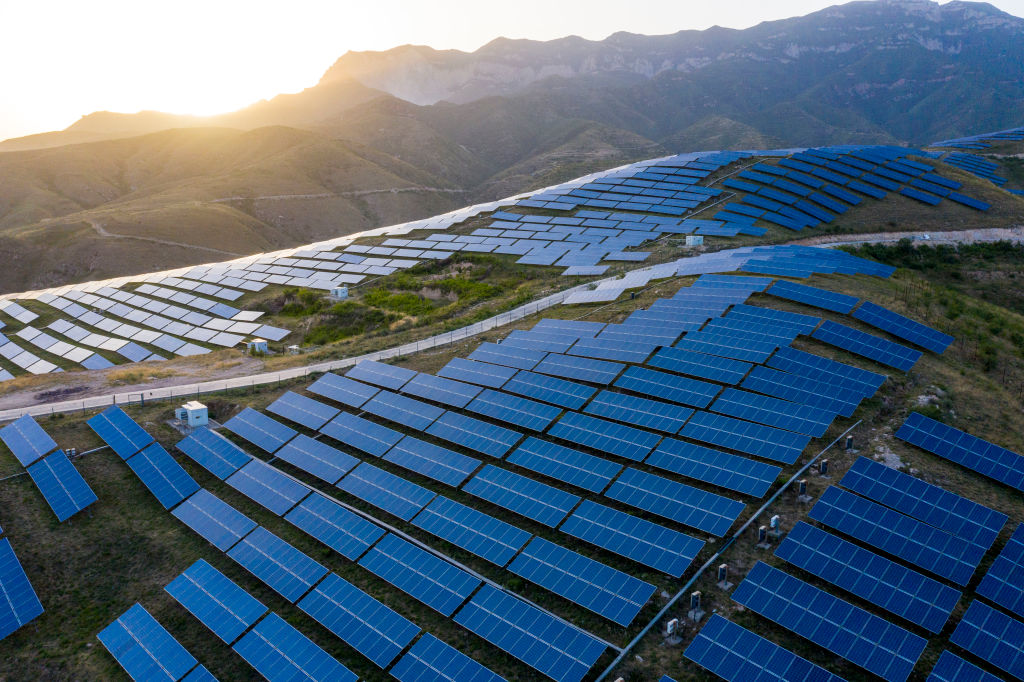
The world’s renewable power capacity grew at a faster rate last year than ever before, while the cost of adding new capacity fell to a record low, says a U.N. Environment Program report released June 10.
Researchers found that in 2019, governments and companies created 184 gigawatts (GW) of new renewable power capacity —12% more than was added in 2018. That increase came despite investment in the sector rising by just 1%, to $282.2 billion, meaning clean power capacity was cheaper to create per watt. (The report does not include the older technology of large hydropower dams because such projects are not subject to the same market dynamics as newer renewable sources, and their long development-time scales make investments hard to measure precisely.)
Renewable energy, like wind and solar power, is becoming cheaper thanks to improving technology, growing economies of scale, and fierce competition in the sector. For example, in the second half of 2019, it cost 83% less to generate electricity from solar plants than it did 10 years earlier, according to the report.
Generating more electricity from renewable sources—which, unlike fossil fuels, do not emit greenhouse gasses like carbon dioxide that trap heat in the Earth’s atmosphere—is essential to preventing the worst effects of climate change. Currently 13.4% of global electricity is generated from renewable sources. That’s up from 12.4% in 2018 and 5.9% in 2009, according to the U.N.
However, to keep on track to meet the goal set by the 2015 Paris agreement, of keeping average global temperatures from rising more than 2°C over preindustrial levels, we would need to add some 3,000 GW of new non-hydro renewable energy capacity by 2030, according to the report. So far countries and corporations have committed to adding just 826 GW of new non-hydro renewable power capacity, likely costing $1 trillion, by 2030, the report finds.
The report’s authors write that they hope the “lack of ambition” for future investment would be rectified as governments lay out recovery packages to deal with the economic impact of the COVID-19 pandemic.
Since the pandemic began, climate campaigners have been pushing for economic packages to avoid propping up the fossil fuel industry, which has slumped as global energy demand has fallen. Instead, many want government funds and loans to be directed towards clean energy and low-carbon industries. Officials in both the E.U. and China, as well as leaders at the International Monetary Fund and the World Bank, have promised to make fighting climate change central to their plans. In the U.S., though, President Donald Trump has pledged extra support for the oil and gas industry.
“The slump in the fossil fuel sector due to COVID-19, combined with the resilience clean energy has shown during this period, made it clear that clean energy is a smart investment,” the reports’ authors argue. “If governments take advantage of the ever-falling price tag of renewables to put clean energy at the heart of COVID-19 economic recovery….they can take a big step towards clean energy and a healthy natural world.”
More Must-Reads from TIME
- Cybersecurity Experts Are Sounding the Alarm on DOGE
- Meet the 2025 Women of the Year
- The Harsh Truth About Disability Inclusion
- Why Do More Young Adults Have Cancer?
- Colman Domingo Leads With Radical Love
- How to Get Better at Doing Things Alone
- Michelle Zauner Stares Down the Darkness
Write to Ciara Nugent at ciara.nugent@time.com